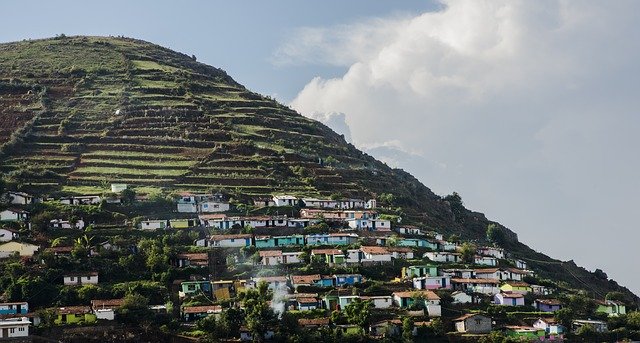Hill stations are a getaway from the summer heat of the plains. But why are hill stations cooler? They are closer to the sun, and we know that hot air rises, but the temperature still decreases as we move up the hill.
To get the answer, we first have to understand the Pressure-Temperature relationship for gases (air). For a gas, pressure and temperature are directly proportional. To put it simply, temperature decreases with the decrease in pressure of a gas, and temperature increases with the increase in pressure of a gas.
As we gain elevation, air pressure decreases which results in decrease in temperature.

Why air pressure is more at the surface and why it decreases with height?
We know that gravitational force decreases with height. Air molecules closer to the surface have more weight because of the higher gravitational force. Hence, they are closer together, increasing the pressure. The increased pressure is also due to the compression from the above air molecules.

Another major factor
A part of Sun’s heat is reflected by the Earth’s surface into the atmosphere. The atmosphere having greenhouse gases re-reflects some of the reflected heat back to the Earth. At higher elevations as the atmosphere gets thinner, most of the reflected heat from the Earth is lost to space and hence the temperature at hills is relatively lower.
Read more